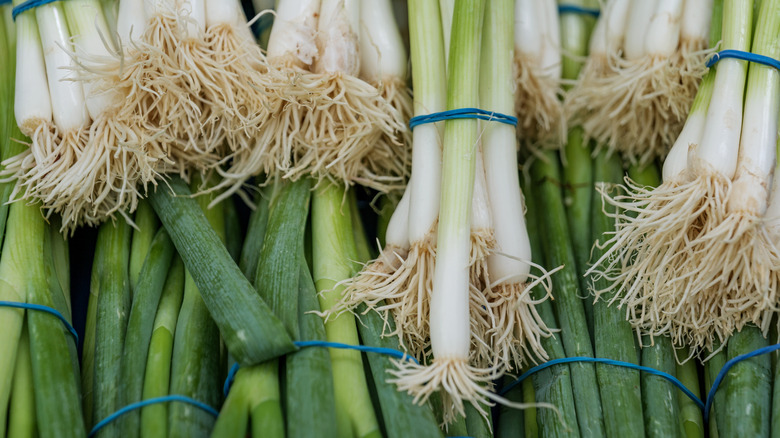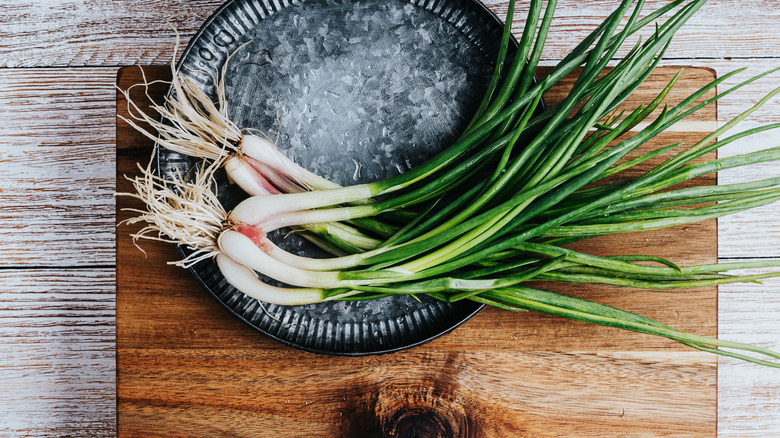Don't Throw Out Scallion Whites And Embrace Their Punchy Flavor Instead
In plenty of recipes, green onions step into the spotlight. However, it's typically their darker, leafy tops that take center stage, often leaving the paler, firm bases behind, waiting for their moment to shine (sizzle). These lower halves, the scallion whites and light green parts, have a different kind of oniony flavor that is a tad punchier. This taste is more pronounced than the greens and has a stronger flavor that you might want to infuse into various dishes.
If you leave your scallion whites raw, they can bring strong, zesty flavor to all kinds of salads including potato salad, tuna salad, or chicken salad. Scallion whites can also be stirred into sauces like a Bloomin' Onion sauce or, one of our favorites, a smoked cream cheese onion dip. When you want to cook them, you'll notice that scallion whites will keep their structure, instead of caramelizing and breaking down. Cook them in a bit of oil to make a pungent, aromatic note for broths, stir-fried dishes, and glazes or sauces.
You'll notice that many Asian food traditions feature the white parts of scallions. Think Chinese scallion oil noodles, scallion pancakes, and grilled chicken skewers with veggies. It's also a great way to bring a stronger flavor to soups, stews, and dumplings. Scallion whites can also be used to season fish and in slow cooker recipes like chicken, pot roast, or other crockpot meals. You can also stuff chopped scallion whites into baked goods like cheesy biscuits or cornbread.
More things to do with leftover scallion whites
Another neat trick you can pull off with your leftover scallion whites if you don't want to store them is actually to grow more scallions. It's quite simple and you don't even need soil, at first; you can just use water. You'll want to keep an inch or two of the scallion white and make sure the roots are still attached. From there, stand the bases of your scallions upright in a glass or jar. Add a small amount of water to cover the roots (about an inch or so, depending on your container), and put it in sunlight for a couple of weeks.
It's a good idea to change the water every day or two, to keep the scallions (and container) clean and prevent them from rotting. Once you see your new greens sprouting, you can snip them and start to make new dishes. It's important to keep in mind that if you're not using soil to regrow your scallions, you can typically only regrow them a few times using the water technique. It draws on energy stored within the white part and, after a while, the new plants might start to look a bit thinner and not taste as flavorful. For more lasting regrowth, you can move your bases into some soil once they've formed stronger roots. This change usually gives you thicker, tastier scallions in the long run.

